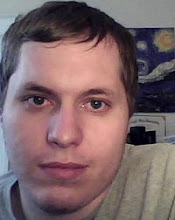 Why do we sleep? This seemingly simple question is one of the longest-standing unsolved mysteries in biology. As bizarre as it sounds, there is no obvious reason why we are inactive for a third of our lives. National Geographic and TIME have both tackled this subject to explain some of the most predominant theories, but the bottom line is that no one really knows. Some scientists believe that sleep restores some as-of-yet-undiscovered substance in our brains, which is depleted while we are awake…or that it removes some as-of-yet-undiscovered substance that accumulates while we are awake. Some observers have noted that getting REM sleep is necessary for our learning of new tasks. Although this is true, it fails to explain how sleep helps us learn or why it is necessary for us to be dormant during this process. Others have theorized that the reason that mammals sleep so much compared to other animals is an artifact from the age of the dinosaurs: At the time, most mammals were nocturnal. Perhaps sleep forced mammals to keep quiet during the day, to avoid becoming dinner for a hungry Tyrannosaurus.
Why do we sleep? This seemingly simple question is one of the longest-standing unsolved mysteries in biology. As bizarre as it sounds, there is no obvious reason why we are inactive for a third of our lives. National Geographic and TIME have both tackled this subject to explain some of the most predominant theories, but the bottom line is that no one really knows. Some scientists believe that sleep restores some as-of-yet-undiscovered substance in our brains, which is depleted while we are awake…or that it removes some as-of-yet-undiscovered substance that accumulates while we are awake. Some observers have noted that getting REM sleep is necessary for our learning of new tasks. Although this is true, it fails to explain how sleep helps us learn or why it is necessary for us to be dormant during this process. Others have theorized that the reason that mammals sleep so much compared to other animals is an artifact from the age of the dinosaurs: At the time, most mammals were nocturnal. Perhaps sleep forced mammals to keep quiet during the day, to avoid becoming dinner for a hungry Tyrannosaurus.Last year, biologists identified a rare gene which allows people to feel rejuvenated after only a few hours of sleep, indicating that it should be possible – at least in theory – to modify the amount of sleep we need in the near future. As the Genomic Revolution picks up in the next year or two, there will undoubtedly be many other genes identified that govern our sleep processes. Understanding them may unlock the key to understanding sleep.
Meanwhile, neurologists are making progress in understanding how sleep affects our brain. As electroencephalograms become more and more obsolete, scientists are gaining access to new ways to monitor our brain activity. Improved neural scans should allow scientists to pinpoint which areas of the brain are most affected by sleep, and how.
Perhaps soon we will understand the nature of sleep. Is it vital for our survival in a way that we don’t understand? Or is it simply a relic of our evolutionary past, with no useful purpose? Understanding sleep is the first step to conquering it. Is it possible that we could develop safe medication to mimic the benefits of sleep, allowing us to remain conscious for 24 hours per day, without the nasty side effects of caffeine or other drugs? This would change our world profoundly. We would essentially be living 50% longer by squeezing an extra eight hours out of our days. People could earn much more money by working more hours without sacrificing their leisure time, or alternatively, they could have much more leisure time without sacrificing their career.
Although some people often claim to enjoy sleep, I think most people would prefer to do without it, if we had the option. I have difficulty believing that anyone could truly enjoy something that they aren’t even aware they are doing. For most of us, our “love of sleep” is really “dislike of waking up.” If we could invent a safe way to remain constantly awake while still reaping whatever benefits we get from sleep, most of us would jump at the opportunity.
PREDICTIONS:
By 2030 – Scientists have a basic understanding of the reasons (if any) that we sleep, as well as why it evolved in the first place.
By 2050 – Medication exists that makes sleeping optional, providing people with any benefits of sleep without the need to actually do so, and without any nasty side effects.





